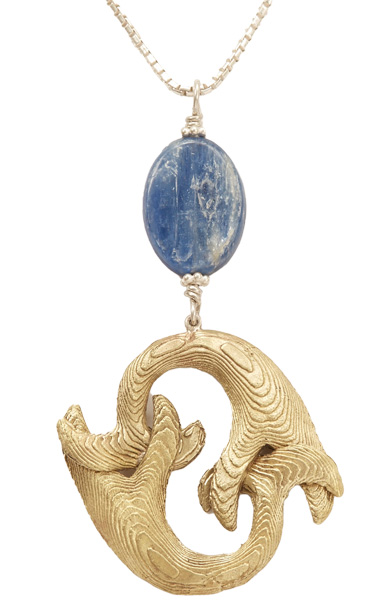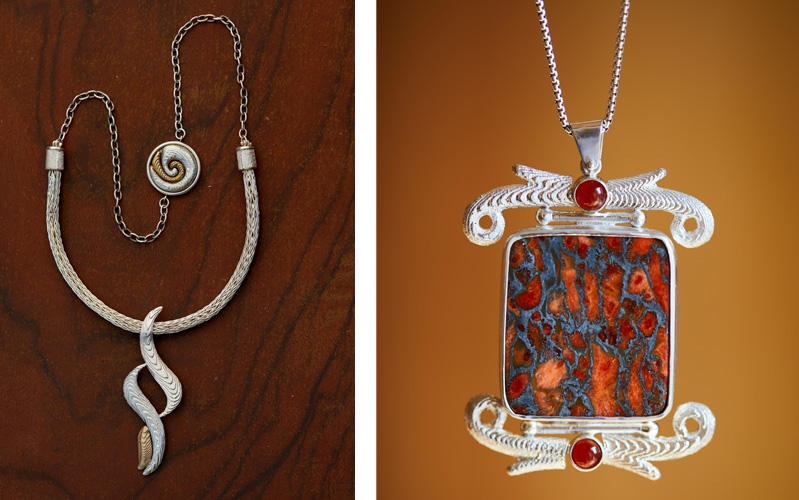
The Art of Casting
For many “art” is a foreign word. It is something that is kept to a certain circle of the population, evoking images of posh homes, and elegant galleries where ‘foreign’ art words are spoken in hushed tones. This is certainly one definition of art, though I’d like to propose a far simpler one: art is anything that anyone took the time to create. Yes, even that doodle you just drew on the side of the page is art. Not everyone is driven to create, though for those of us that are, you are likely familiar with the constant drive to do so. Whatever your medium, you create because it brings you joy to do so – and that is art.
For Tony Deluca, creator of About Face Jewellery, the urge to create has and continues to take many different forms. From the crafted models he painted in high school to the poetry and books he’s written, and of course, jewellery, creating new things to either aid others or bring them joy is the way that he interacts with the world.
Although there are many mediums that he works with, for the last 30 years cuttlebone casting has been his area of expertise, and what you’ll notice is part of most of his jewellery. A process that pre-dates the popular lost-wax casting that we use today, cuttlebone casting starts, unsurprisingly, with a piece of calcified cartilage from the cuttlefish. Sawing the bone in half, you then take that bone and carve out your design on the reverse of one half. Once carved, you will pair it with the other half to create your mold; the hollowed-out space that is created by the carving will be filled with metal to create your shape, which can then be combined with other mediums to create something larger, or it could be the final piece in and of itself.

This, of course, is cuttlebone casting at its most basic. There are many more means of making the process more complex, in order to create more interesting final pieces, such as creating hollow pieces.
If you look at any of Tony’s work, you will probably notice that the majority have a rough grainy texture similar to that of a piece of wood – that’s from the cuttlebone. Each piece has its own unique texture, reflecting the bone from which it was cast. Historically, when used, the pieces that came out would be hammered and flatted to return them to a smooth texture. Tony chooses to keep the natural texture, allowing it to add a unique personality to each piece.

Although our featured “artist” this issue, Tony prefers to call himself a “Creative Problem Solver” who happens to work in metal and jewellery. When it comes to design, anything and everything can be inspiration. From the curve of fur on a fox’s neck, to the personality shown in a person’s tattoos – they all say something, they can all speak to the viewer. The problem becomes figuring out how to take that initial spark or idea and make it into something interesting – not just from an aesthetics’ stand point, but a functional one too. A piece of jewellery that is too uncomfortable or fragile to wear serves no purpose.
Which is one of the many reasons that Tony not only encourages but requires his students to experiment and think outside of the box. Each lesson comes with the standard or popular way to develop a skill, followed by an assignment to experiment, and try something different. After all, if you only know how to follow instructions you’ll be in trouble when you encounter a problem that requires you to think, change and adapt.
When it comes to Tony’s approach to creating, it really is all about knowledge and experimenting. Just like someone who cannot swim will avoid the water, a creator who is not comfortable with a medium will avoid it, therefore limiting their own ability to work and design. To grow and develop you have to be able to learn and dare to try the unfamiliar. Something that doesn’t always happen with recent art grads who have the talent but not the confidence or resources to create to their full potential. This is why, as of May, he has begun the Stepping Stones mentorship program out of Local Pieces Gallery, on St. Andrew’s St in Fergus, the same place you can find much of Tony’s own work, as well as that of his wife, children and other local artists.
So, next time someone asks you what art is, remember that it doesn’t have to be nearly as complicated, or ‘sophisticated’ as you might have been previously led to believe. Art is whatever you choose to make it – so teach yourself some new skills, experiment with your ideas, and dare to create it!
WRITTEN BY: JILLIAN KENT | RESOURCES: TONY DELUCA – ABOUT FACE JEWELLERY

